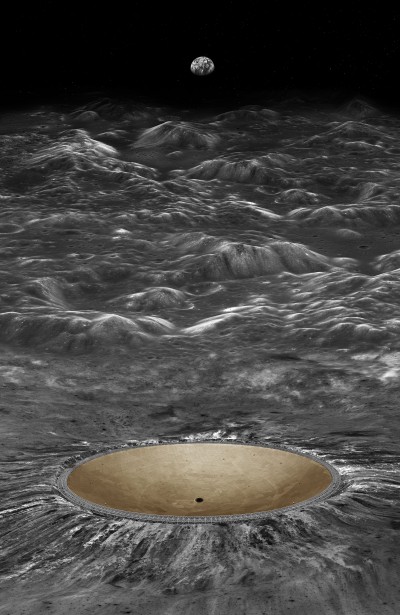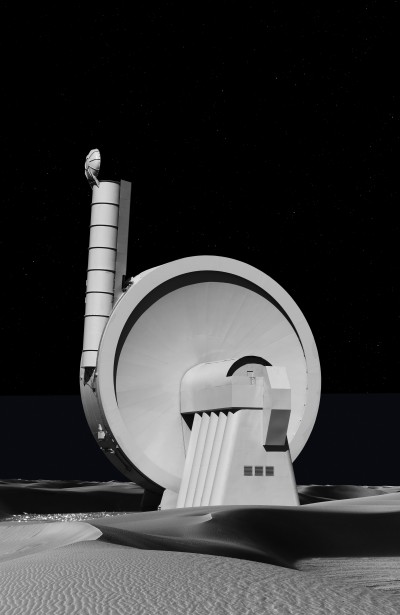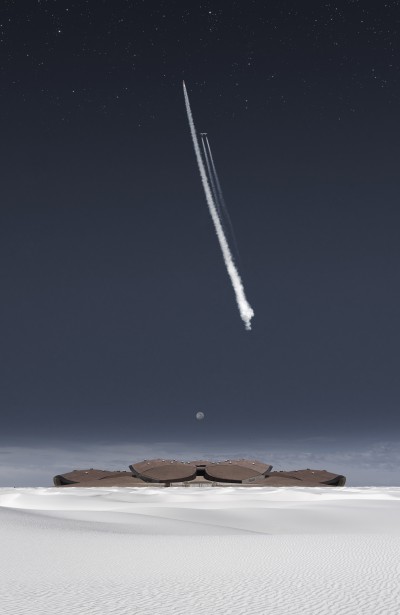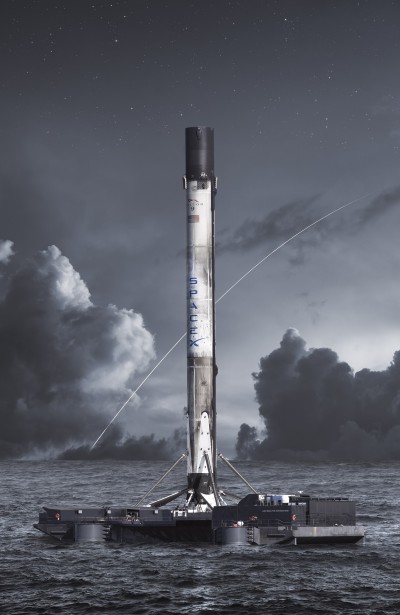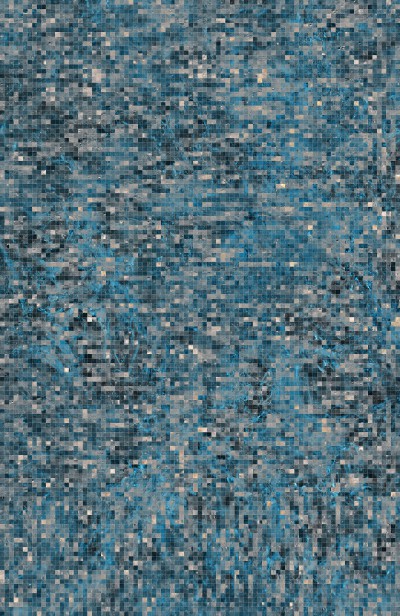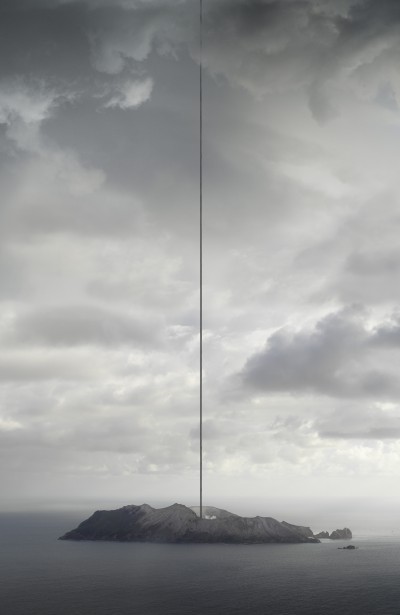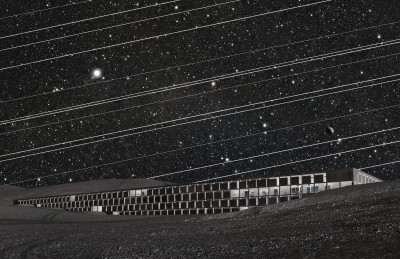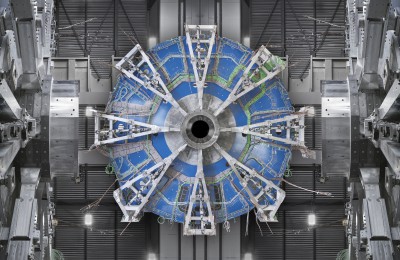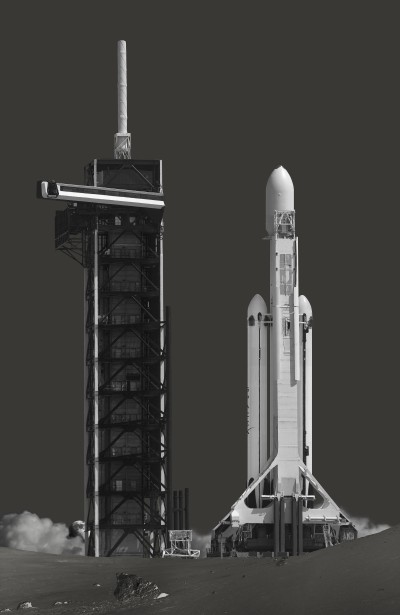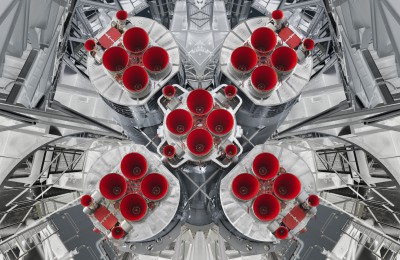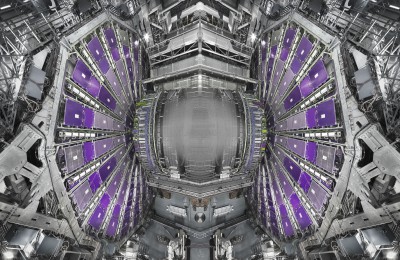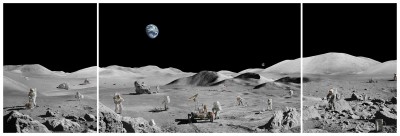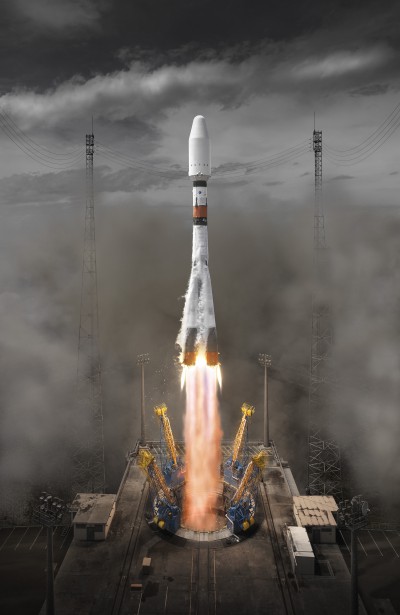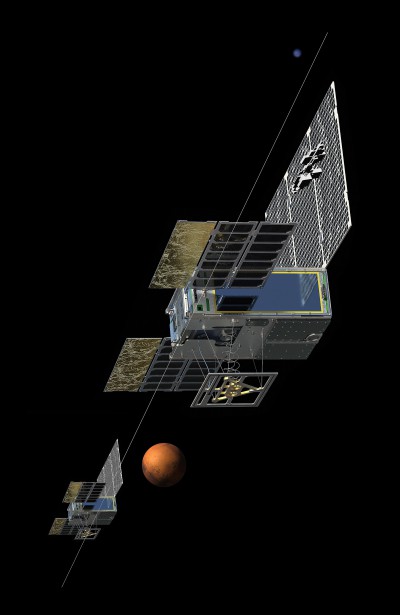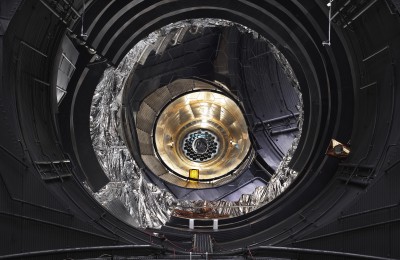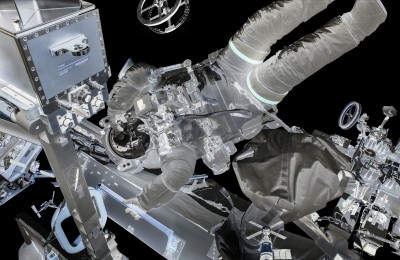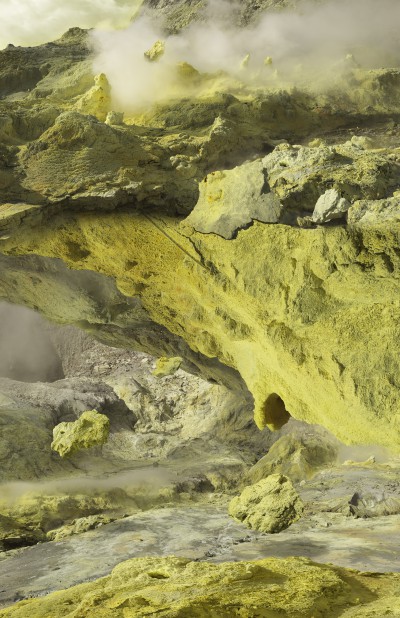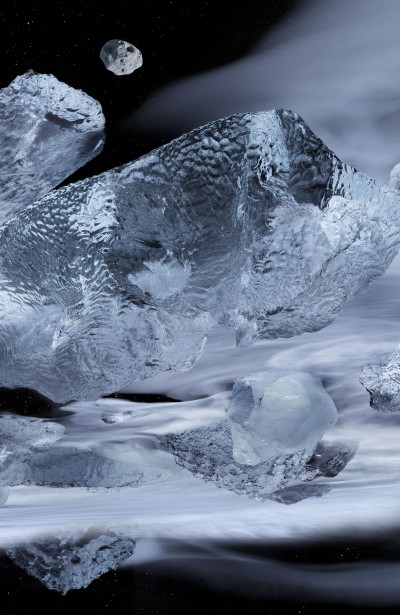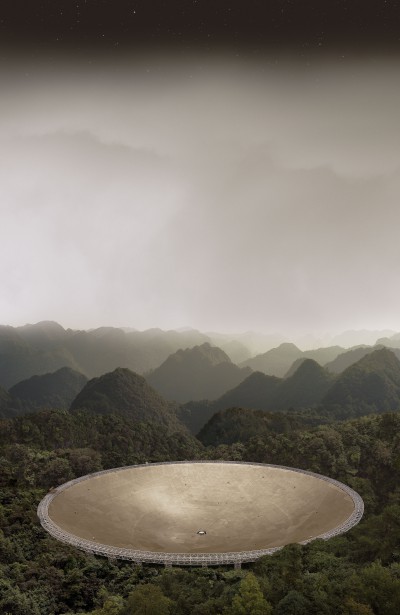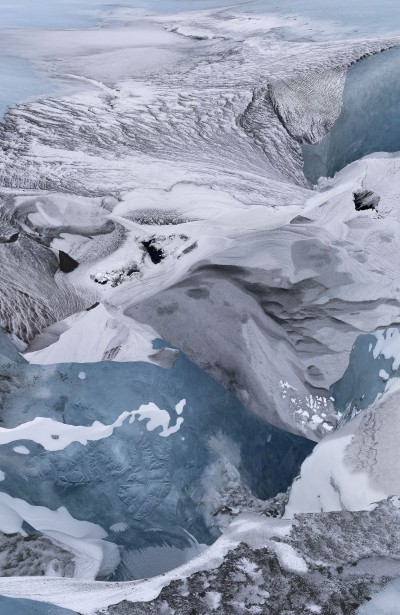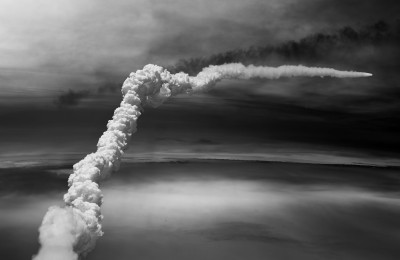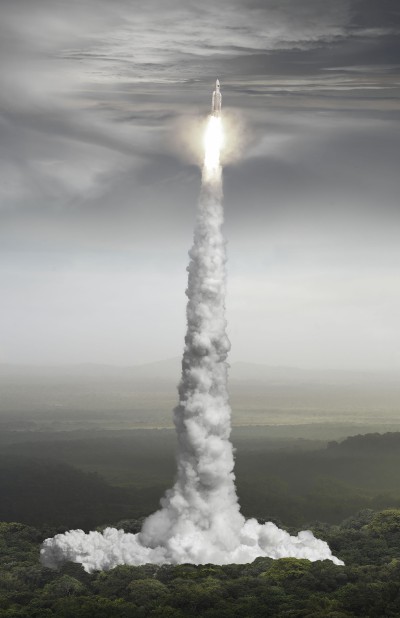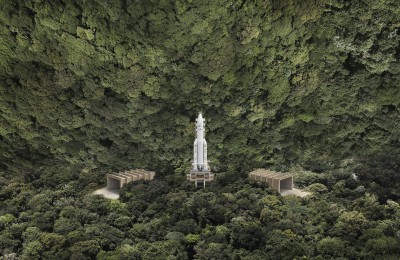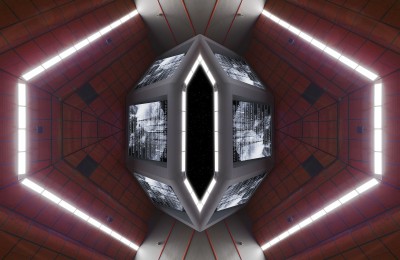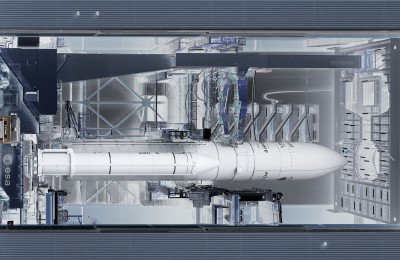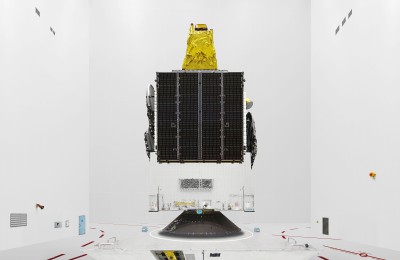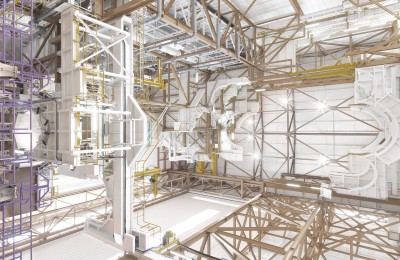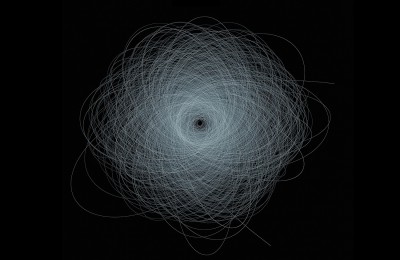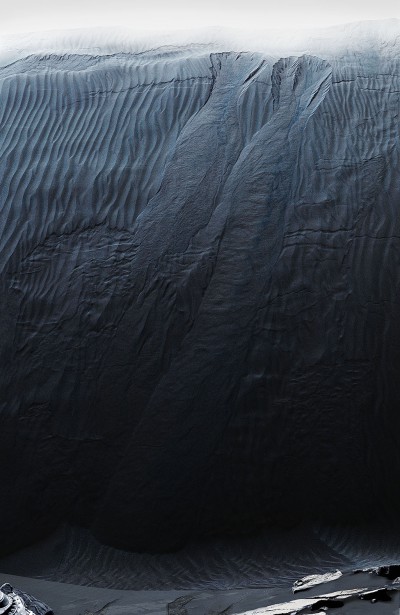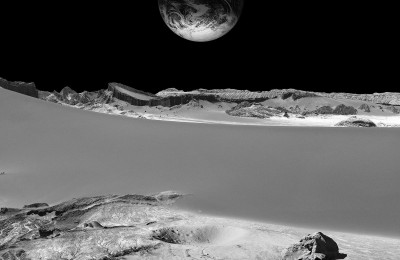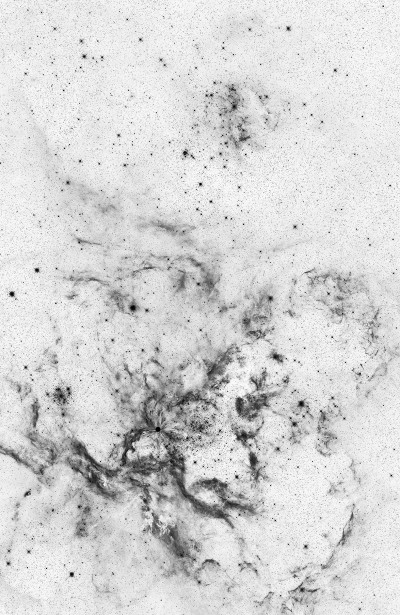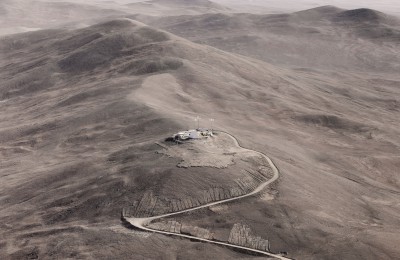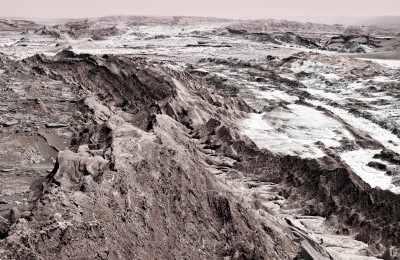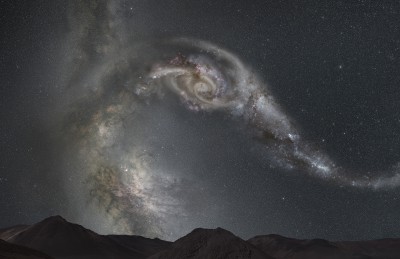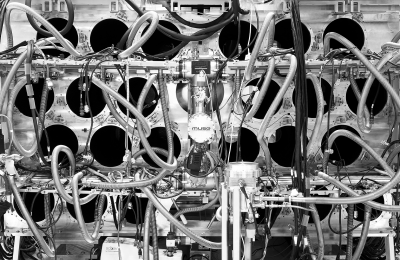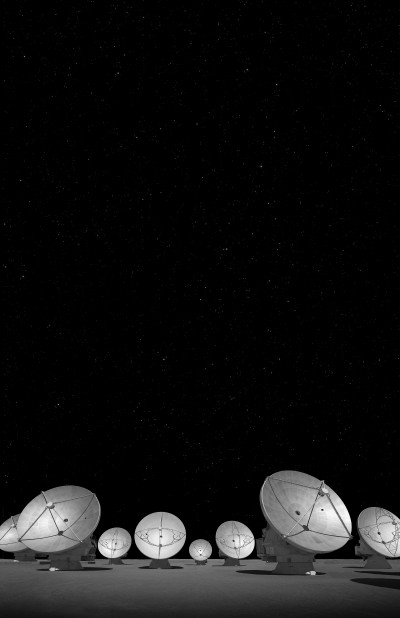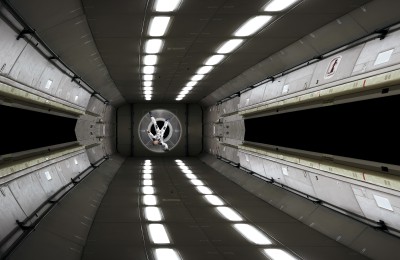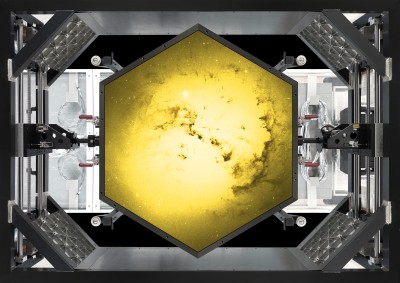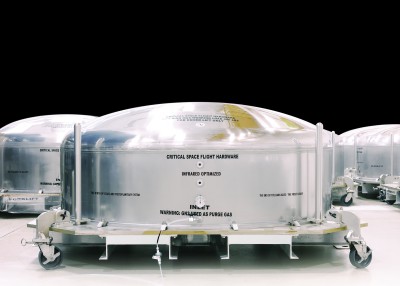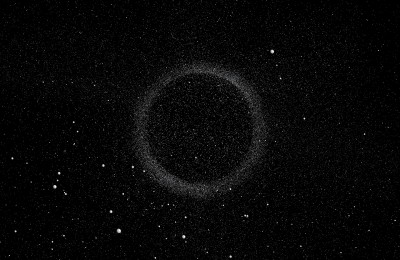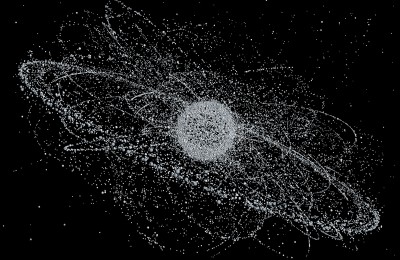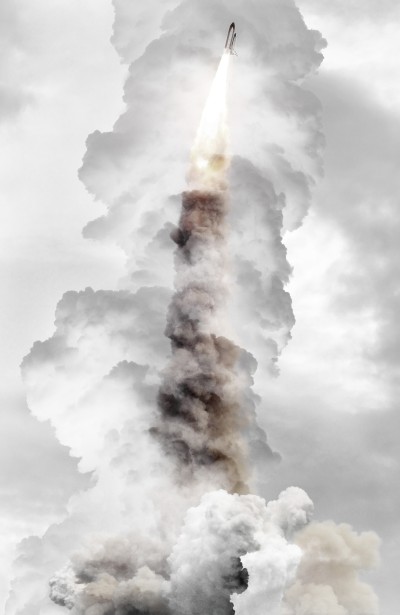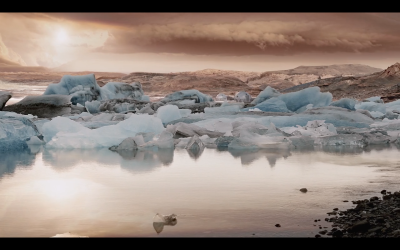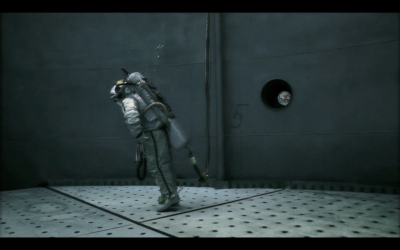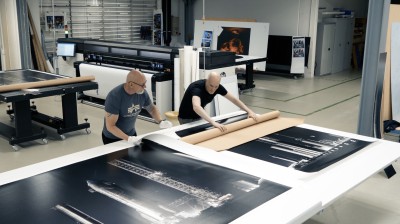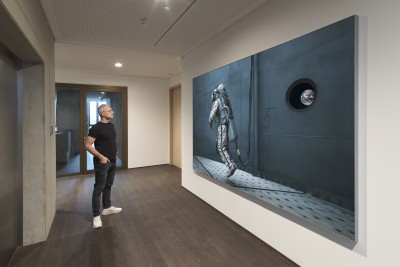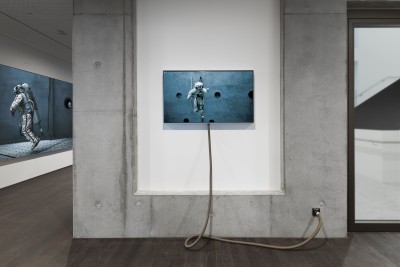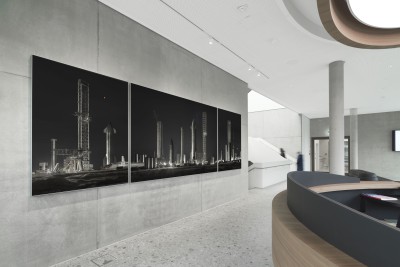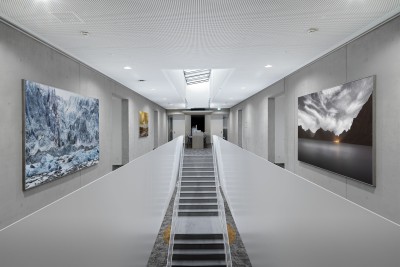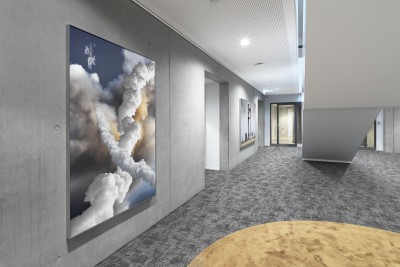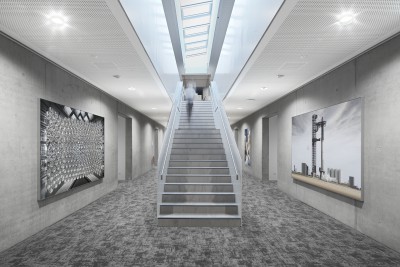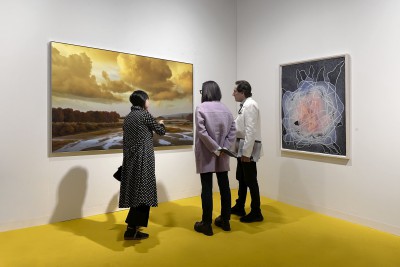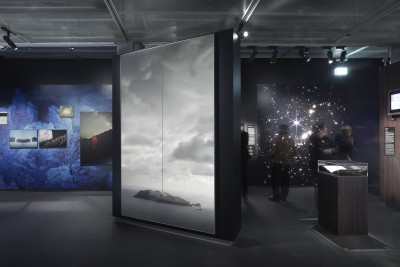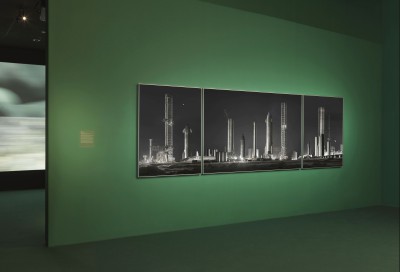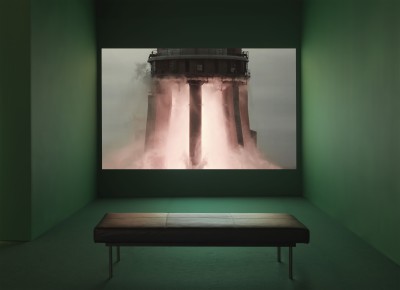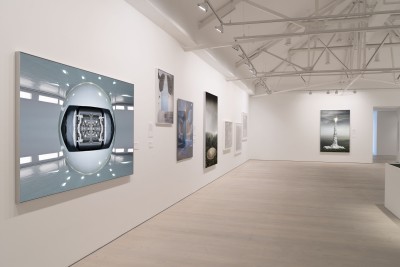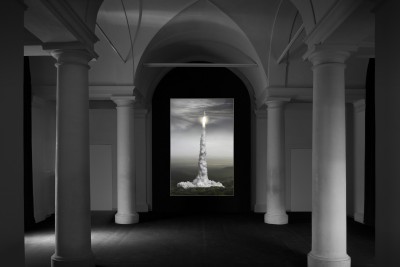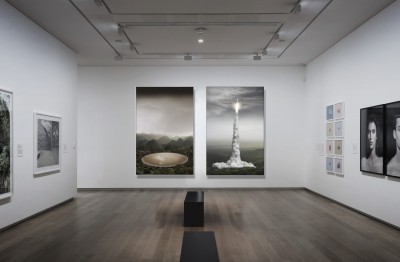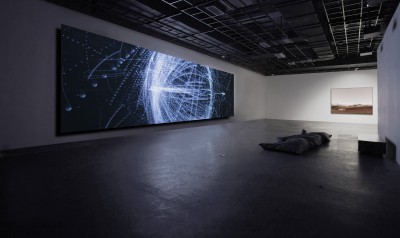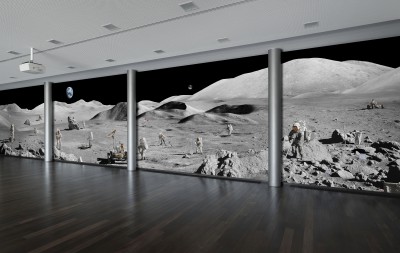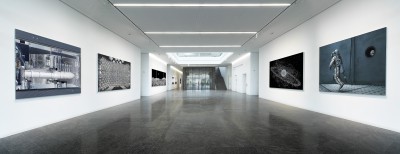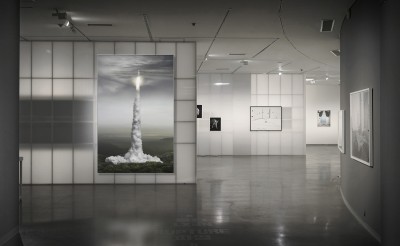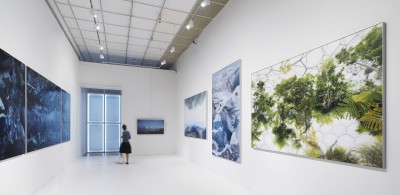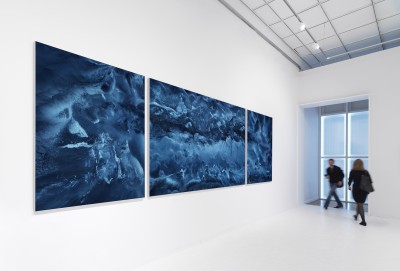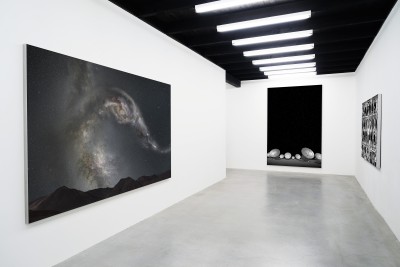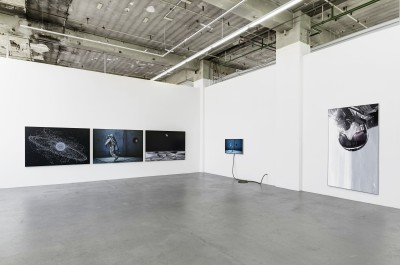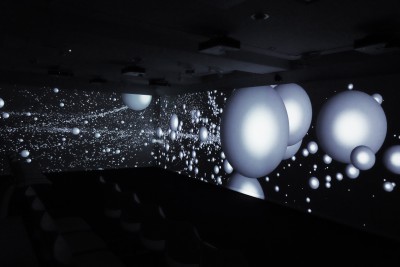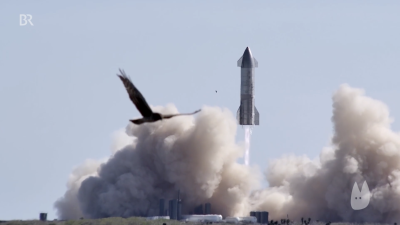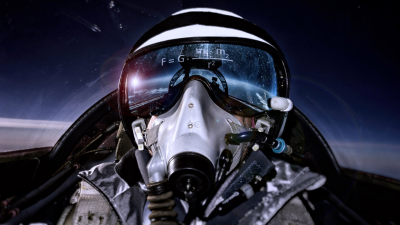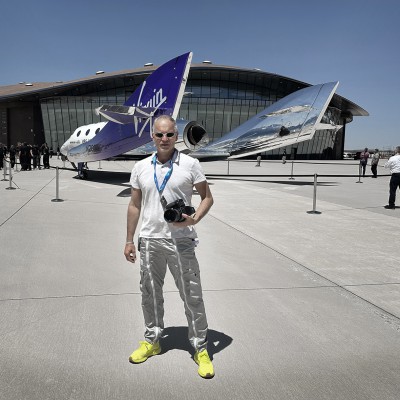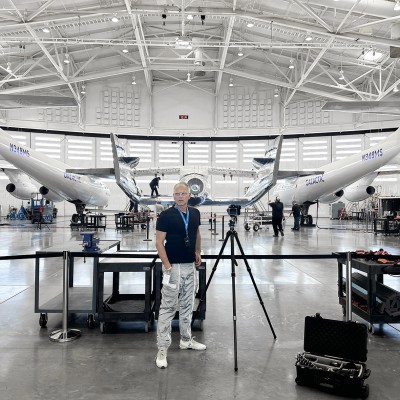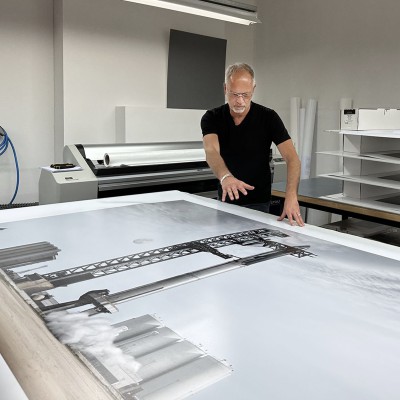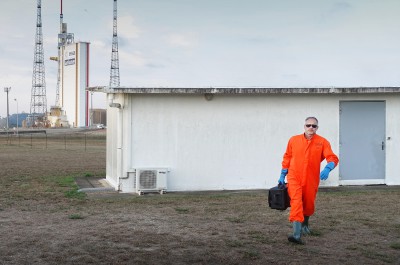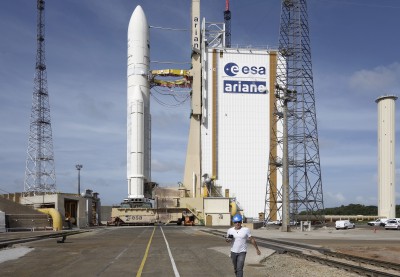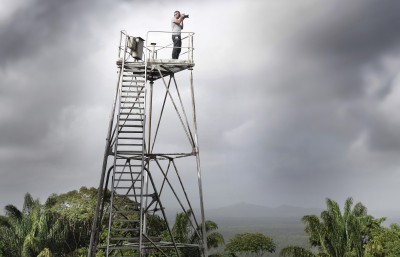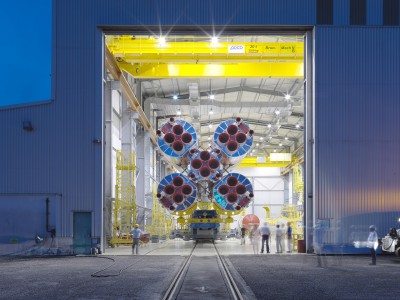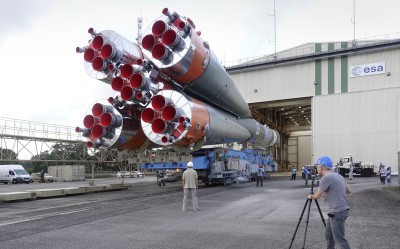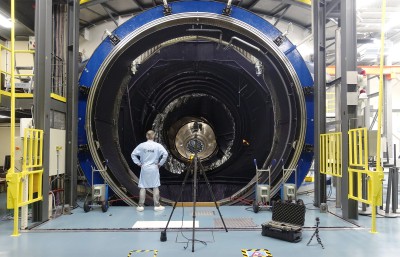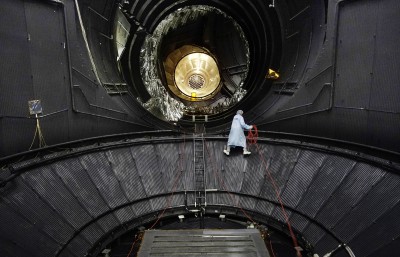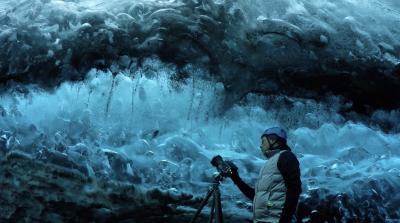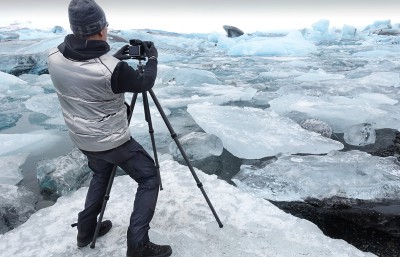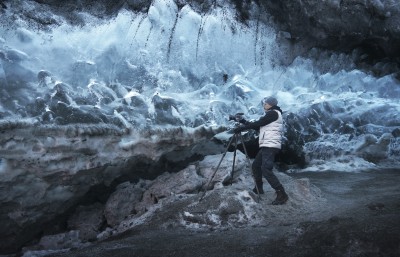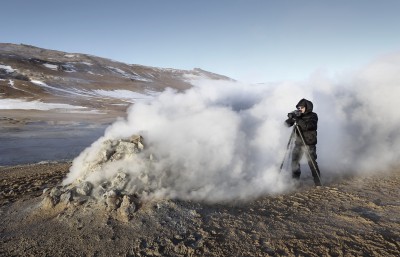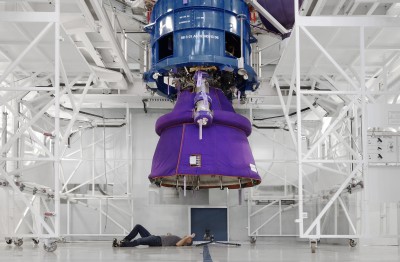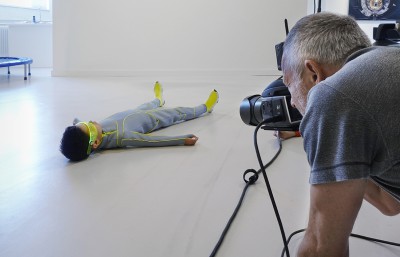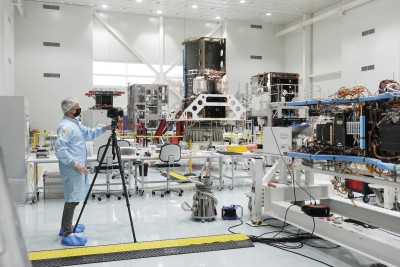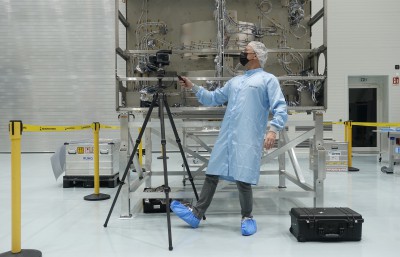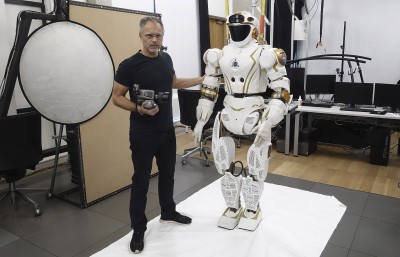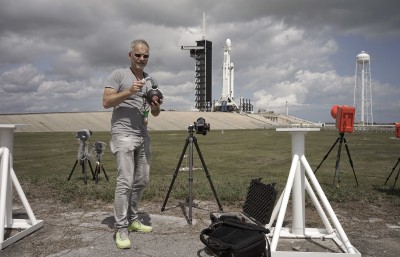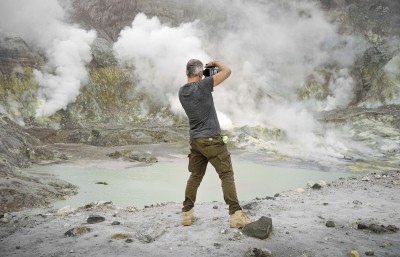outer space

Since 2011, Michael Najjar has been developing his extensive series “outer space”, which explores the latest advancements in space research and their far-reaching impact on life on Earth, in near-Earth orbit, on the Moon, and other celestial bodies. In recent years, technological innovation has led to a dynamic expansion of human activity in outer space. This evolution brings civilizational, ethical, and geopolitical questions into focus, demanding a new discourse on humanity’s expansion beyond our home planet.
For decades, space exploration was the exclusive domain of state-run agencies. Today, private enterprises and start-ups are increasingly shaping this field. This paradigm shift toward commercialization is driven by innovations such as reusable rockets, which allow broader access to space. The deployment of vast satellite constellations, global surveillance systems, military infrastructure, artificial intelligence applications, extraterrestrial mining, and the development of commercial space stations and permanent human outposts on the Moon and Mars all mark a new era of space activity—ultimately aiming at the gradual colonization of space. Scientific discovery is no longer the sole objective; instead, geostrategic power projection and economic interests are increasingly coming to the fore. At the same time, space-based data has become vital for monitoring human-driven climate change. Satellites provide continuous global data on temperature shifts, rising sea levels, ice coverage, vegetation cycles, and atmospheric processes.
In light of profound geopolitical transformations and the accelerating ecological crisis, it becomes clear: in the decades ahead, we must rethink our existential frame of reference—not only Earth-bound, but expanded to include orbital and outer space as future spheres of life and action.
Michael Najjar’s “outer space” series began in 2011 with a photograph of the final launch of NASA’s Space Shuttle Atlantis. In retrospect, this historic event marked a turning point—the beginning of what is now called the New Space era. The series currently comprises over seventy photographic works and several video pieces. At the heart of Najjar’s artistic investigation lies both the technological transformation and the cultural dimension of humanity’s growing presence in space. The series explores the intersections of art, science, and technology. In highly complex visual montages, documentary and fictional elements merge into visionary images that vividly illustrate current and future developments in space research and exploration.
Najjar has visited many of the world’s most important space centers: the Kennedy Space Center and the new Starbase in the United States, Star City in Russia, the Baikonur Cosmodrome in Kazakhstan, the Guiana Space Centre in French Guiana and the German Aerospace Center. In close dialogue with scientists, engineers, and astronauts, he gained access to global research facilities developing next-generation spacecraft, rockets, satellites, and telescopes.
In Chile’s Atacama Desert, he photographed some of the world’s most powerful telescopes, perched on remote Andean plateaus. In China, he documented the world’s largest radio telescope, hidden deep in the forest. In Iceland, he explored the concept of terraforming through his lens.
At Starbase in Texas, he captured the first test flight of the revolutionary Starship; in the White Sands desert, he photographed Virgin Galactic’s spaceplane. At NASA, he portrayed the legendary James Webb Space Telescope during its early development, and at the Human Robotics Center in Edinburgh, he focused on future humanoid Mars robots. On Svalbard in the High Arctic, he visited the world’s northernmost satellite station; in New Zealand, he descended into the crater of an active volcano; in Switzerland, he gained access to the world’s largest particle accelerator at CERN. He is currently documenting the mission of the latest exoplanet finder in Germany and the Netherlands. Through long-term collaborations with leading scientists, engineers, and space agencies, Najjar has been granted privileged access to locations typically closed to the public.
The performative dimension has become a central aspect of Najjar’s artistic process—culminating in his own journey into space. Since 2012, he has been a Pioneer Astronaut with the space company Virgin Galactic. Over the years, he has followed the development of the experimental private spaceplane and is scheduled to become the first contemporary artist to travel into space in 2027.
Najjar underwent an intensive astronaut training program—at the Gagarin Cosmonaut Training Center (GCTC) in Star City, the German Aerospace Center (DLR) in Cologne, and the National Aerospace Training and Research (NASTAR) Center in the USA. Pushing both mental and physical limits, he subjected himself to a demanding series of training modules: a stratospheric flight in a MiG-29 fighter jet, zero-gravity flights, high-G centrifuge tests, underwater training in a space suit, and a HALO parachute jump from 10,000 meters. The photographic and video material collected during these extreme experiences often forms the basis of his later image compositions.
Works from the series have been exhibited in numerous renowned museums, biennials, and galleries around the world. In 2017, the series was nominated for the prestigious Prix Pictet. Two extensive publications on the project have been released by DISTANZ Verlag; in addition, Michael Najjar published Planetary Echoes with Spector Books—a collection of essays on the future colonization of our solar system. The work has been widely covered in numerous articles. The “outer space” series is ongoing and expands by three to four new works each year.
